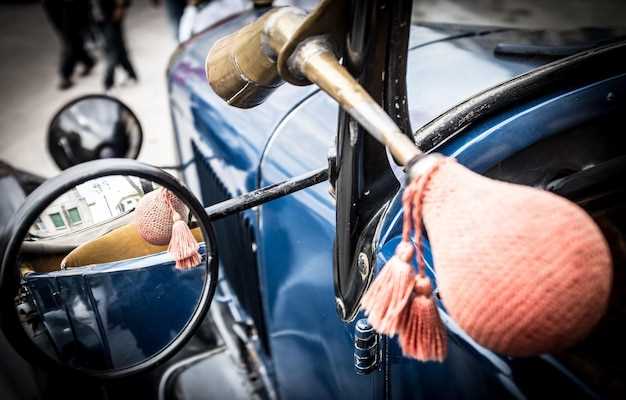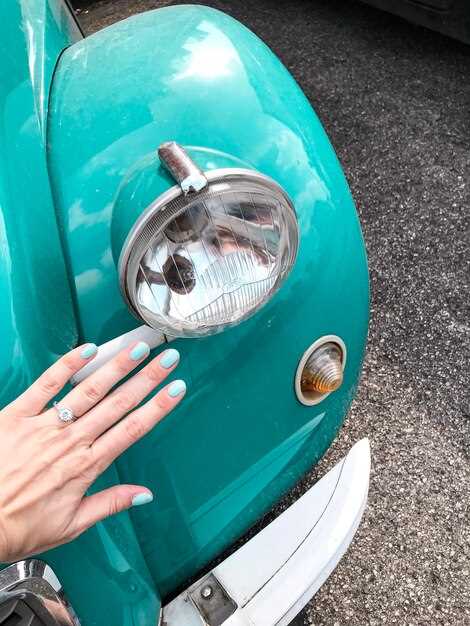
Restoring a vintage car is not simply a hobby; it is a journey through time that allows enthusiasts to breathe new life into classic automobiles. This guide serves as a comprehensive resource for individuals looking to embark on the rewarding process of car restoration, ensuring that you approach each step with confidence and clarity.
The restoration of classic vehicles involves much more than just mechanical repairs; it encompasses a variety of tasks that can include bodywork, interior refurbishing, and sourcing authentic parts. Understanding the necessary phases of restoration not only protects the integrity of the vehicle but also enhances its overall value. Whether you are a seasoned restorer or a novice, embracing a methodical approach will yield the best results.
In this guide, we will break down the restoration process into manageable steps, providing you with practical tips and insights. From assessing the condition of your vintage car to executing the final touches that give it that museum-quality finish, every detail matters. Prepare to dive deep into the world of classic car restoration and discover the secrets to creating a breathtaking automobile that honors its rich history.
Assessing the Condition and Setting a Restoration Budget
When undertaking a classic car restoration project, the first essential step is to assess the condition of the vehicle. Thoroughly inspect the body, frame, engine, and interior for signs of wear and damage. Look for rust, dents, and structural issues that may affect the car’s integrity. Additionally, evaluate the state of the mechanical components, such as the transmission and brakes, as these will significantly impact the restoration process.
Once you have a clear understanding of the car’s condition, the next step is to set a restoration budget. This budget should encompass all potential expenses, including parts, labor, and unexpected costs. Research the availability and pricing of necessary components, as some classic car parts can be rare and expensive. Determine if you will perform the restoration yourself or hire professionals, as labor costs can vary widely.
It is also wise to allocate a contingency fund, usually around 15-20% of your total budget, to cover unforeseen expenses that often arise during restoration. Collect quotes from local shops and experienced restorers to refine your projections and ensure your budget aligns with the project scope.
Remember that a successful restoration not only enhances the aesthetics and performance of your classic car but also can increase its value. Thus, having a well-researched budget will ensure you can enjoy the restoration journey while making informed financial decisions.
Sourcing Authentic Parts and Tools for Restoration

Restoring a classic car often hinges on the availability of authentic parts and specialized tools. A successful restoration demands a keen eye for detail and a dedication to maintaining the vehicle’s original character. Start by identifying the specific parts your classic car requires. Make a comprehensive list categorized by priority to ensure you focus on essential components first.
Research is crucial in sourcing authentic parts. Utilize online forums, social media groups, and classic car clubs dedicated to your vehicle model. These platforms can connect you with fellow enthusiasts who may offer parts for sale or can recommend reputable suppliers. Additionally, websites specializing in vintage car parts can provide an extensive inventory of new and used components, allowing for a more effective search.
Visit local salvage yards or auto auctions, as these places can yield hidden treasures. Often, vintage cars are dismantled, and their parts may still be in excellent condition, waiting for a new home. Networking within the classic car community can lead you to private sellers who may possess rare components that are hard to find elsewhere.
When it comes to tools, ensure you have access to equipment that matches the era of your classic car. Invest in restoration-specific tools, such as torque wrenches, bodywork tools, and diagnostic equipment suitable for older models. Local hardware stores or online retailers may stock period-correct tools and equipment. Also, consider borrowing tools from fellow restorers or joining a workshop to gain access to specialized equipment.
Quality should always come before price when sourcing parts and tools. Authentic components may come at a premium, but using substandard parts can lead to issues down the line. Emphasize authenticity over convenience, as these original elements are what define your classic car and contribute to its overall value.
By diligently sourcing authentic parts and tools, you lay the groundwork for a successful restoration. Careful planning, thorough research, and networking within the classic car community are essential elements of this process, ensuring that your project remains true to its roots while breathing new life into a vintage machine.
Step-by-Step Techniques for Engine and Body Restoration

Restoring a classic car involves meticulous attention to both the engine and body. Each component requires specific techniques to achieve a successful restoration.
Engine Restoration
Begin with a thorough cleaning of the engine bay. Remove grease and dirt with a degreaser. Once clean, inspect the engine for any visible damage or wear. Pay special attention to the gaskets, seals, and hoses, as these often degrade over time.
Next, conduct a compression test to check the engine’s internal health. If compression is low, consider a rebuild. Disassemble the engine, carefully labeling each part for reassembly. Replace worn components such as pistons, rings, bearings, and the timing chain.
Inspect the carburetor or fuel injection system and clean or rebuild it as necessary. An efficient fuel system is crucial for the performance of any classic car. Ensure that the ignition system, including spark plugs and ignition timing, is also in working order.
Finally, reassemble the engine using new gaskets and seals to prevent leaks. Once assembled, install the engine back into the chassis and connect all the necessary wiring and hoses. Start the engine and ensure it runs smoothly, troubleshooting as needed.
Body Restoration
Begin the body restoration by assessing the condition of the car’s exterior. Look for rust, dents, and areas requiring bodywork. Remove any existing paint using a body stripper or sandblaster. Protect your workspace and yourself with appropriate safety gear.
For rust issues, grind down affected areas to bare metal and apply a rust converter. If there are extensive rust holes, consider patching with new metal or fiberglass. Ensure all body panels are straight; utilize body hammers and dollies to fix bends and dents.
Once the body is prepped, apply a primer to seal the metal and provide a good base for paint. Choose a high-quality automotive paint suitable for your classic car, and apply it evenly, following the manufacturer’s instructions. Allow adequate drying time between coats for optimal results.
After the paint has dried, polish the surface to achieve a glossy finish. Install new weather stripping to ensure proper sealing and protect the interior from moisture.
By focusing on both engine and body restoration techniques, you will ensure your vintage car not only looks stunning but also runs efficiently, preserving its legacy for future generations.

